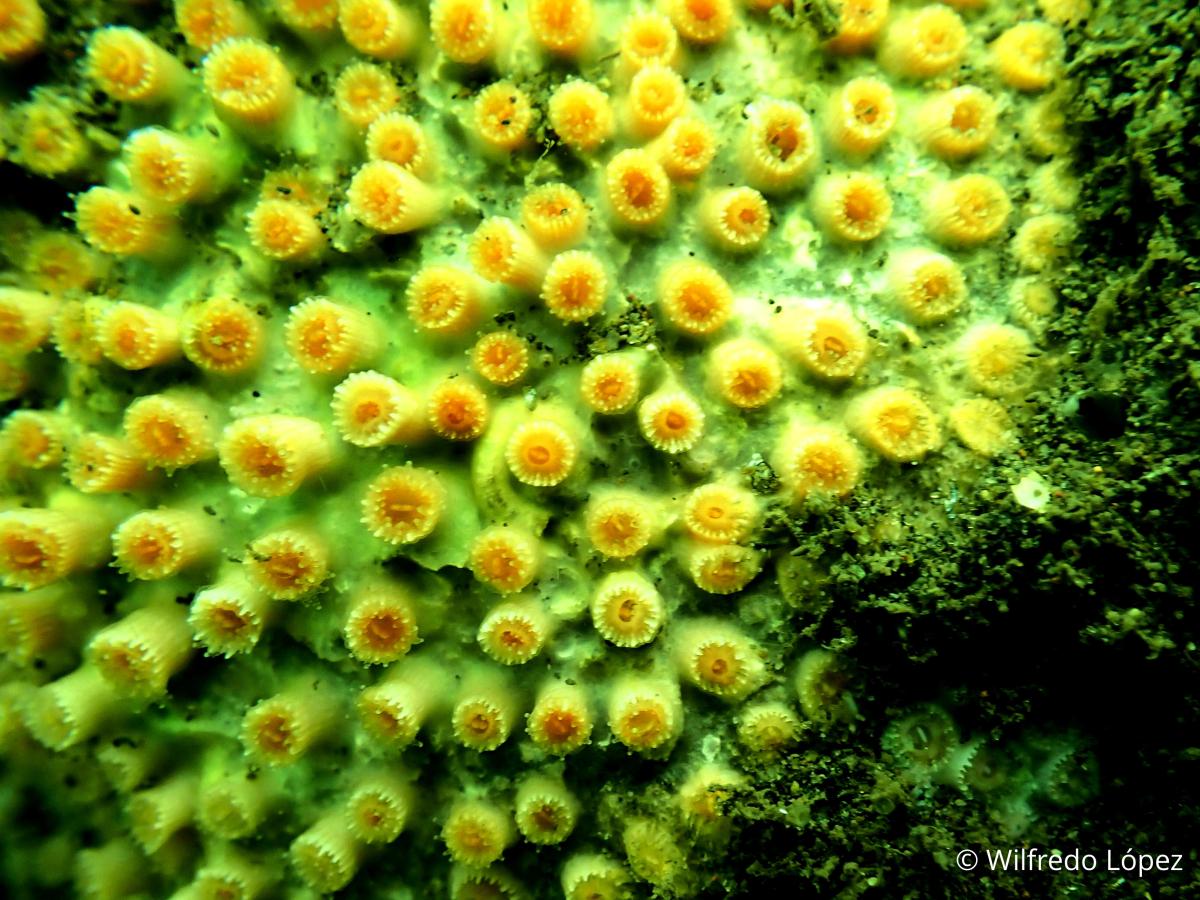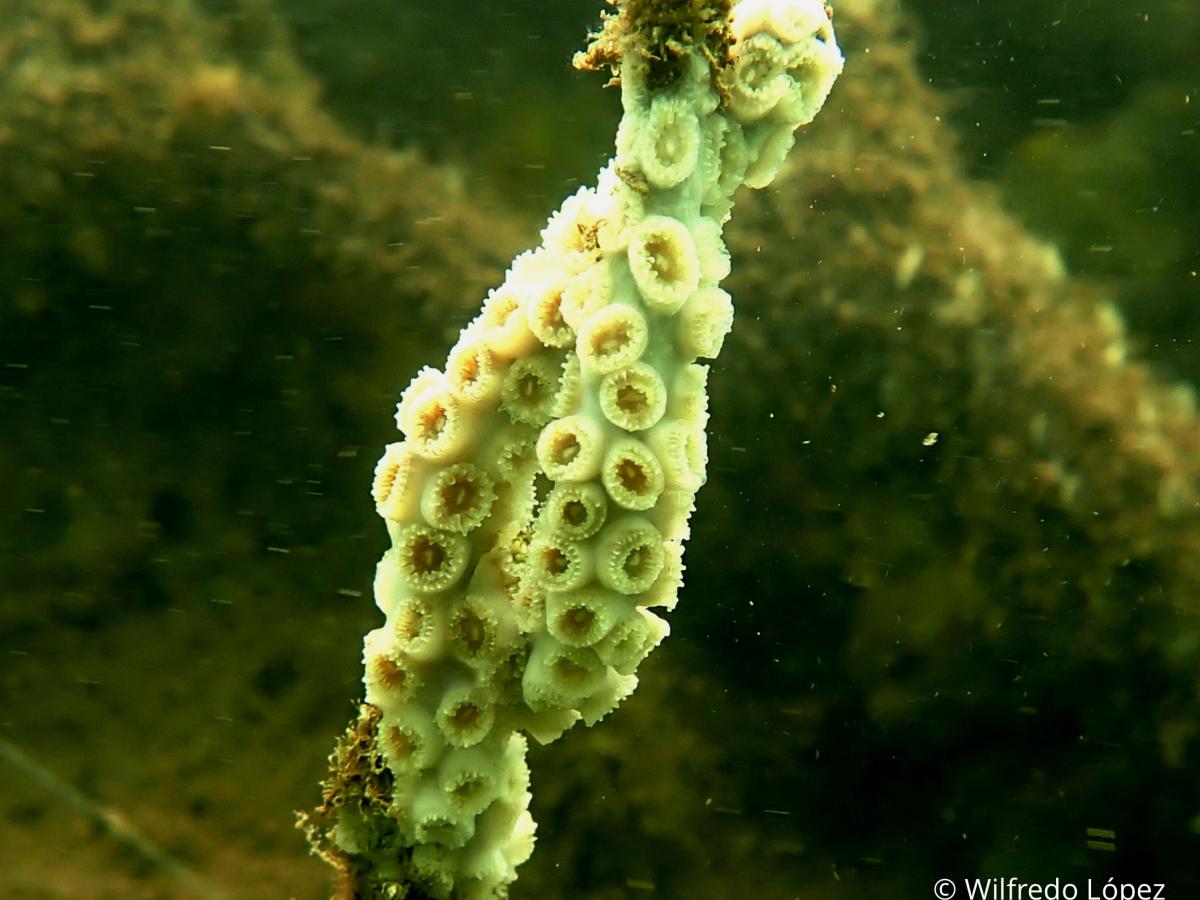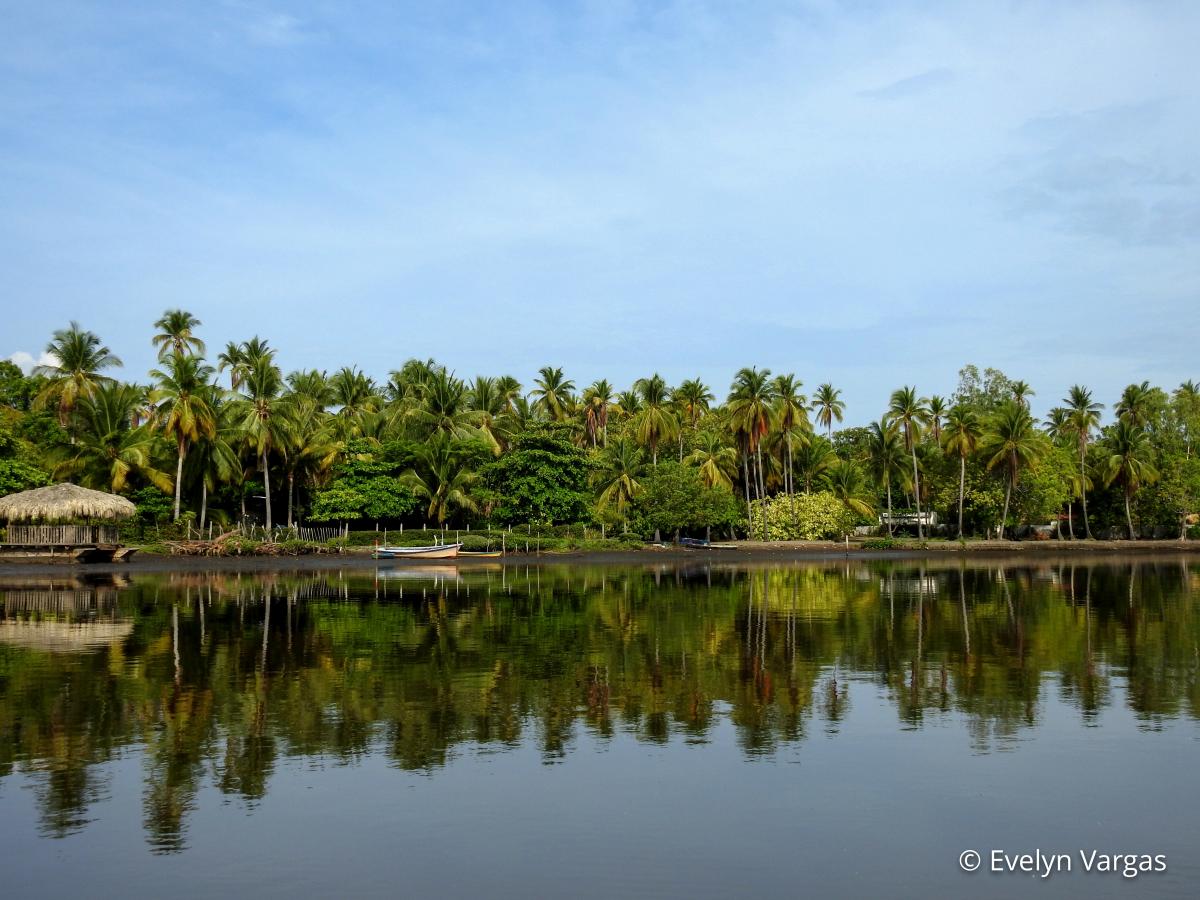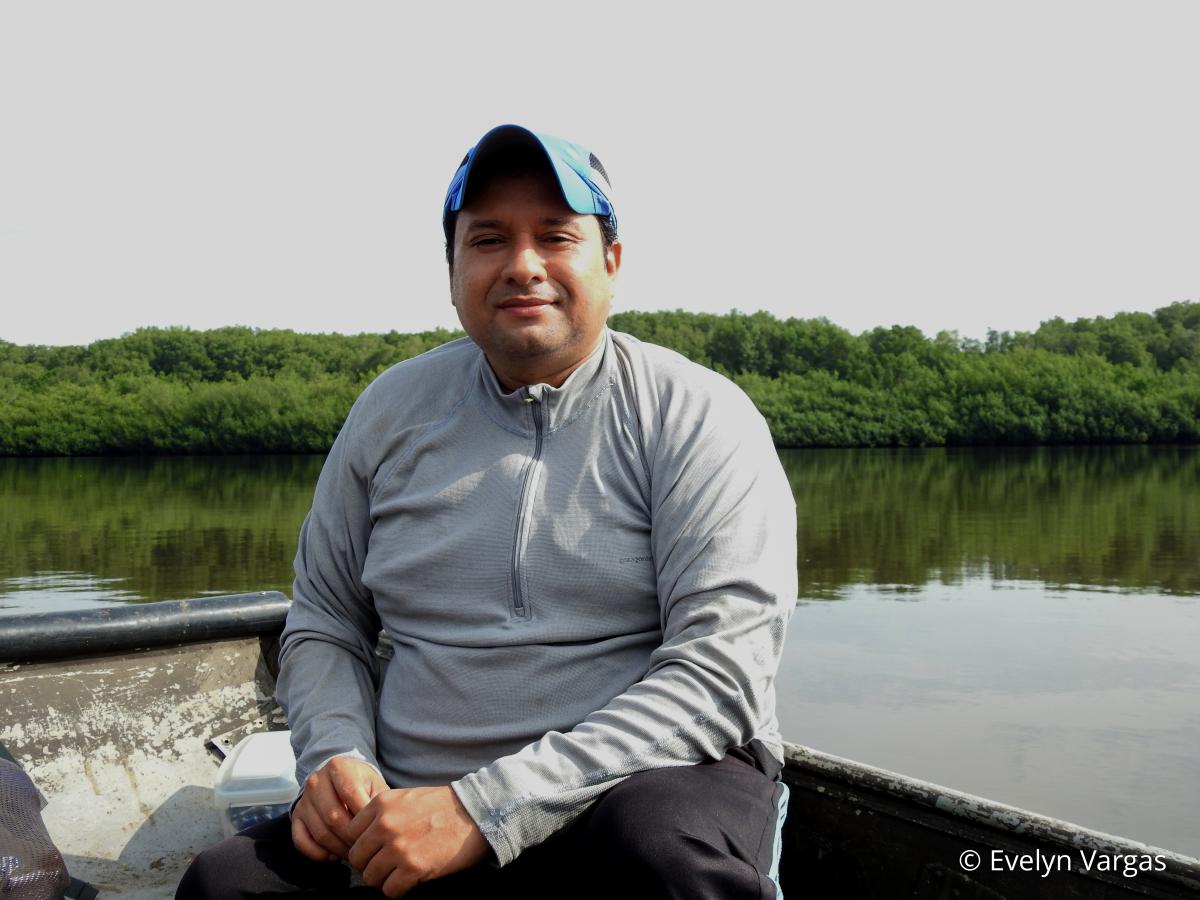Salvadoran biologist Wilfredo López tells us how he found a new species of hard coral.

On the morning of January 13, 2022, Wilfredo Lopez encountered an unexpected group of animals while diving five meters deep in a pool near the mouth of Barra de Santiago, on the west coast of El Salvador.
Behind them came the wildlife ranger Alberto Henríquez and Margarita López, Wilfredo's sister and colleague. They were not out for a stroll. They were investigating the possibility of the presence of seagrasses in the mouths and some parts of the mangrove channels where fresh water mixes with salt water. They had dived through the canals without finding any grasses, and had only seen some sea sponges and anemones.

"At the mouth we didn't expect to find anything because there is a lot of erosion. The current is too strong," says Wilfredo.
With a full team of logistical and technical support in San Salvador and coastal communities, the divers focused on analyzing the health of coral reefs (natural and artificial), and looking for associated ecosystems, such as seagrasses, in Los Cóbanos, Metalío, Barra de Santiago and Garita Palmera. The study was commissioned by the Regional Coastal Biodiversity Project, an initiative of IUCN (International Union for Conservation of Nature) and USAID.

Salvadoran and international scientists, who never imagined that this species could be found in that area of the eastern Pacific Ocean, were overjoyed by this chance encounter with a colony of hard coral Astrangia cf equatorialis The coral Astrangia equatorialis was first described by researchers Wyatt Durham and Laurens Barnard in 1952, from samples collected in a series of expeditions in Mexico, Panama, Ecuador and Costa Rica between 1932 and 1941.
"It is not common to find coral species in mangroves, because mangroves do not offer hard places where corals can stick and they move a lot. Also, the visibility is low and the salinity is different from the open sea. But in that part of the mangrove where we found this coral, the salinity is usually 34 parts per million, and that is good for the coral. Sea water has between 35 and 36 parts of salt dissolved in one liter of water," says the biologist, in addition to emphasizing that the colonies sighted have adhered to pieces of concrete that ranch owners have thrown away to alleviate the effects of erosion on their land.

According to the Barra de Santiago Complex Ramsar datasheet, this site contains an area representative of the mangroves of the North Pacific ecoregion of Central America and a palm swamp (Brahea salvadorensis) representative of an ecosystem typical of the Mesoamerican dry tropical forest ecoregion. It is home to numerous threatened or endangered species. Among them, four species of sea turtles (Eretmochelys imbricata, Lepidochelys olivacea, Dermochelys coriacea and Chelonia mydas). Mangroves also support about 75 percent of El Salvador's commercially important coastal fauna.
During subsequent explorations, biologists and wildlife rangers photographed the corals for subsequent taxonomic identification with the help of international specialists, including Carlos Jiménez, research associate at the Enalia Physis Environmental Research Centre, and Drs. Peter Glynn, Stephen Cairns and Jorge Cortés. In addition, Dr. Enrique Barraza contributed to ratify the taxonomic groups and bibliographic sources.

What Is a Coral?
Corals are marine animals attached to the bottom of hard substrates. They attach themselves to rocks, remains of shells and coral itself and any hard artificial material, such as pieces of concrete, mesh and sunken ships. They secrete calcium carbonate to grow. With an external calcareous skeleton, their organism is glued inside, just like that of shells and oysters. They are living organisms that, together, form a colony.
"Corals of the genus Astrangia are stony corals of the family Rhizangiidae. They do not form coral reefs. They are solitary corals with large polyps and are found in groups," says Wilfredo.
Officially, 16 different species of corals have been recorded in El Salvador. Of the species Astrangia cf equatorialis, a total of 71 colonies have been reported for the country. To conserve the species, it is vital to fight against the bleaching phenomenon caused by climate change and water pollution by heavy metals and pesticides.
A Range of Possibilities
Baba Dioum, a Senegalese environmentalist, said: "In the end, we will only conserve what we love, we will only love what we know, and we will only know what we are taught.”
Along the same lines, Wilfredo says that "to love something, you have to know it." And therein lies the importance of this finding.
"We can't conserve just for conservation's sake. We need to know what we have to take care of it and take advantage of these resources from a livelihoods approach for local communities," he says.
In the near future, Wilfredo foresees that there may be diving tours to learn about this new species of hard coral, which would provide more economic opportunities for the inhabitants of Barra de Santiago, which is already known for the Ministry of Environment's crocodile conservation program. Other tourist attractions include bird roosts and El Cajete Island. Potential diving tours in the mouth of Barra de Santiago could complement the offerings of these protected wetlands that are cradles of biological diversity, including sea turtles and commercial species, as they offer adequate conditions for feeding and development.

Fulfilled Dreams
Together with other colleagues, Wilfredo was at the right place at the right time on three occasions. In 2009, he identified the only seagrass recorded for El Salvador, in Jiquilisco Bay. Also, in 2007 he identified another species of hard coral at El Zope beach, Los Cóbanos. The new finding of Astrangia cf equatorialis adds to the happy coincidences of the young biologist.
Born in Chalatenango, Wilfredo has a Master's degree in Ecosystem Management and a PhD candidate in Marine Sciences from the University of Alicante, Spain, and previously a Biologist from the University of El Salvador.
His parents are elementary and high school teachers, and he has two younger brothers who are also biologists and one who is a professional chef.
"I feel satisfied for having fulfilled my parents' expectations, for the contributions we have made, for fulfilling my dreams and being useful to my country," he says. "And this scientific topic more than anything else is thanks to the fact that there have been sponsorships and projects like those of USAID."
The Regional Coastal Biodiversity Project, led by IUCN in consortium with Goal and five local partners, with support from USAID, works for the conservation and sustainable use of biodiversity in marine-coastal ecosystems in Central America, through the development of valuable productive initiatives that promote ties to the community and strengthen local self-management capacity.
